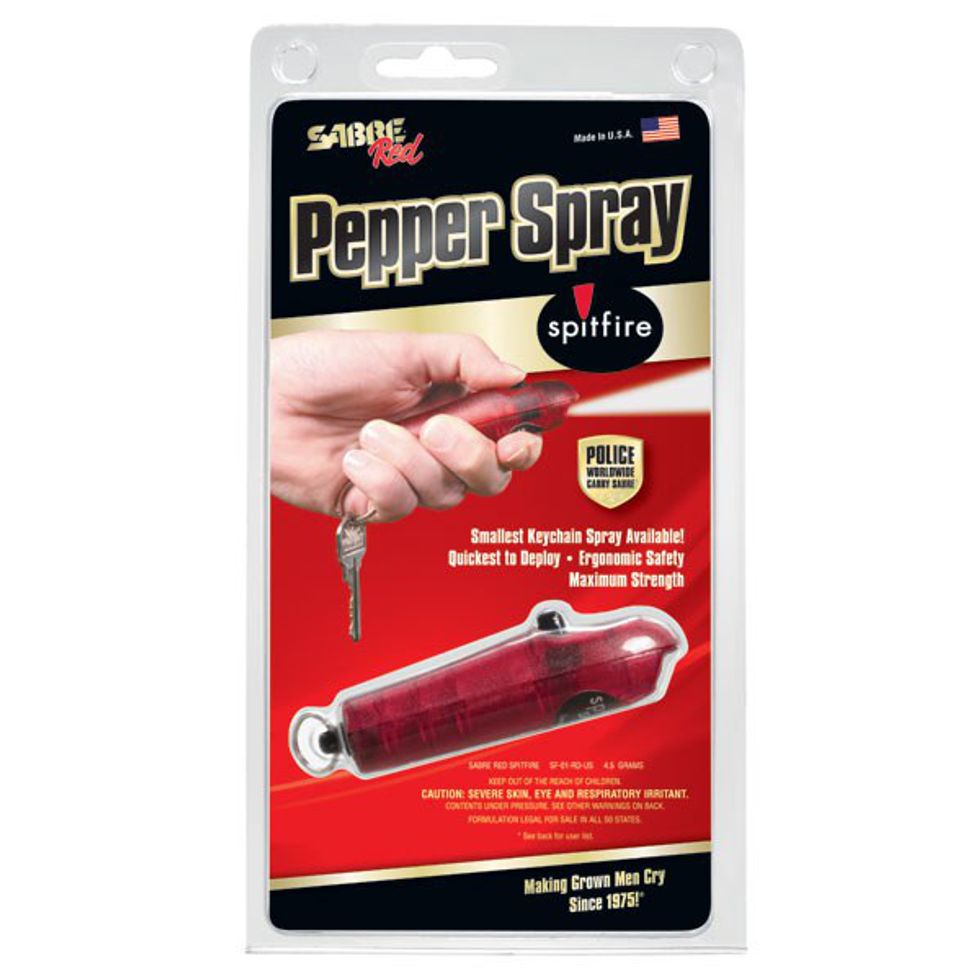I walk home from work solo at midnight or close to 1AM sometimes. It’s not a rare feat in New York City, or any city for that matter. I feel safe in my neighborhood, even late at night when it hits the ante meridiem point, what with the Halal cart still sizzling with spiced chicken, the crowds emerging from the ACBD station, the taxis and NYPD circling around, the 24-hour delis and Laundromats for the night owls, and the families and friends sitting outside on folding chairs just catching up on their day.
Regardless, I always have my lanyard wrapped around my right hand as I stroll home, apartment building key tucked tight between my index and middle fingers. But I let my arm swing naturally as I walk, I keep my gaze steady, and occasionally I glance over my shoulder as if to look at the store sign.
Before that, my fingers would be wrapped loosely around a keychained pocket spray attached to my lanyard, but that was before airport-style security took it away (because I was ditzy enough to leave it on the lanyard with my keys in my possession when I went to a political event).
I used to be asked, “Isn’t that illegal?” Well, sure, if you’re under 18 years old or if you have a history of felony or assault in any of the fifty states. However, if those don’t apply to you, and you’d use it for the sole purpose of self-defense, then no. It’s a tool I’d highly recommend having, unless you’re crazy, of course.
At the time of purchase, the authorized seller requires you to sign a form confirming that you’ve had no criminal charges, that you’re using it only for defensive purposes, and that you’ve been provided with a booklet of instructions and precautions.
Perhaps the common misconception is that “mace is illegal,” and so people shy away from having a form of self-defense. In fact, however, mace is actually another name for tear gas, which isn’t the same as pepper spray. Tear gas, while it also has the ability to deter an assault, will not affect attackers on certain drugs and may be toxic in large quantities. The mace that we’re familiar with refers to the brand name that manufactures pepper spray, containing oleoresin capsicum, OC, which is similar in effect to the numbing molecule found in peppers and hot sauce.
As you may have accidentally, shamefully, regrettably experienced when you touch your eye after cutting a habanero pepper, the OC spray burns and stings an attacker for at least a couple of minutes as to distract them while you make your getaway. While the pain is intense, it is only temporary and is not toxic to our present knowledge, so there is unlikely to be any legal accusations against the use of pepper spray as a defense tactic.
While the damage is minuscule, if existent, I should note that the possession of “self-defense spray" is listed with codes pertaining to pistols, rifles, revolvers, and the like in New York State laws, and each state has its own rules and regulations regarding the selling and possession of such weapons. So although pepper spray is not lethal or as permanent as any firearm, it is to be used responsibly in accordance with the law, as with all methods of self-defense.
I’m a seemingly non-muscular female just shy of five feet—a perfect target for amateur and professional attackers alike—but no matter your gender, size, clothing, ethnicity, or age, a self-defense pepper spray is never a bad idea. Even if the area is not as dangerous as others, it doesn’t hurt to be attentive and prepared. Whether living in a quiet, suburban, upper-middle-class neighborhood, or outside a college campus, or among hundreds of people on one block whom you’ll never meet, there’s never a guarantee. Ultimately there really isn’t much to fear if we remain relaxed and trusting—with an underlying awareness.







 Energetic dance performance under the spotlight.
Energetic dance performance under the spotlight. Taylor Swift in a purple coat, captivating the crowd on stage.
Taylor Swift in a purple coat, captivating the crowd on stage. Taylor Swift shines on stage in a sparkling outfit and boots.
Taylor Swift shines on stage in a sparkling outfit and boots. Taylor Swift and Phoebe Bridgers sharing a joyful duet on stage.
Taylor Swift and Phoebe Bridgers sharing a joyful duet on stage.













